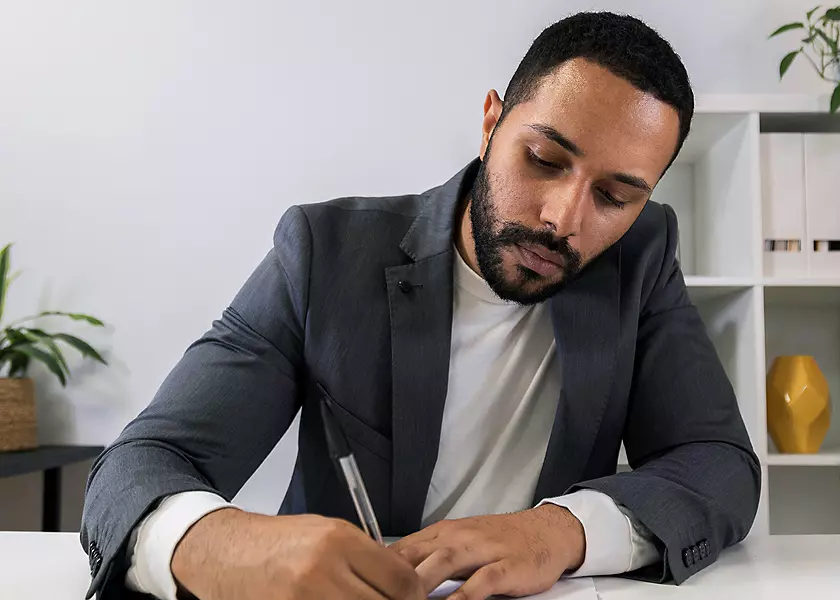Career development
Robert Half talent solutions and recruiting pros help job candidates develop their careers and reach their goals. Explore fresh, up-to-date insights now and chart your career with confidence.
How to Write a Letter Asking for a Raise
Start a tough conversation with total confidence. Explore essential tips for a successful salary negotiation.
 Read more
Read more
How to Write a Letter of Resignation
Exit with class. See what to include – and what to leave out – of a resignation letter to finish on a positive note.
 Read more
Read more
The 29 Most Valuable IT Certifications
Check out our list of the 29 most valuable IT certifications to expand your skill set, impress prospective employers and stand out from the crowd.
 Read more
Read more
More career development tips
Read more
Demand for Skilled Talent
Get insight into 2025 employment and job market outlook and learn which professionals are hardest to hire in our report, the Demand for Skilled Talent
 2026 Salary Guide
Access Robert Half’s 2026 Salary Guide & Survey, including data on salary ranges and benchmarks, perks and benefits, and total compensation.
2026 Salary Guide
Access Robert Half’s 2026 Salary Guide & Survey, including data on salary ranges and benchmarks, perks and benefits, and total compensation.
 Landing a job
Research and insights
Director of Finance: Duties and Compensation Outlook for 2026
The director of finance is a valuable guide for a fast-growing firm. Learn more about this role and get the salary outlook for the year ahead.
Landing a job
Research and insights
Director of Finance: Duties and Compensation Outlook for 2026
The director of finance is a valuable guide for a fast-growing firm. Learn more about this role and get the salary outlook for the year ahead.
 What is an EMR Specialist? Skills, Salary and Responsibilities
EMR specialists manage electronic health records and ensure patient data stays accurate and secure. Discover salary ranges and key skills.
What is an EMR Specialist? Skills, Salary and Responsibilities
EMR specialists manage electronic health records and ensure patient data stays accurate and secure. Discover salary ranges and key skills.
 Your Path to Becoming a Medical Credentialing Specialist
Want to become a medical credentialing specialist? Learn what qualifications you need, what the job involves and what you can expect to earn in 2026.
Your Path to Becoming a Medical Credentialing Specialist
Want to become a medical credentialing specialist? Learn what qualifications you need, what the job involves and what you can expect to earn in 2026.
 Accounting Certifications Employers Really Want to See
Looking for information on the best accounting certifications in today’s market? Find out what it takes to earn these valued credentials and how they can help you advance in your career.
Accounting Certifications Employers Really Want to See
Looking for information on the best accounting certifications in today’s market? Find out what it takes to earn these valued credentials and how they can help you advance in your career.
 How Much Does a Financial Analyst Make? Salary and Career Outlook for 2026
Learn how much financial analysts make in 2026, plus job duties, in-demand skills, and common career paths in finance and FP&A.
How Much Does a Financial Analyst Make? Salary and Career Outlook for 2026
Learn how much financial analysts make in 2026, plus job duties, in-demand skills, and common career paths in finance and FP&A.
 Payroll Professional Salaries and Career Paths: What to Know for 2026
Explore 2026 payroll professional salaries, career paths and the skills shaping demand across industries. Learn how experience, certifications and role scope influence compensation and long-term growth.
Payroll Professional Salaries and Career Paths: What to Know for 2026
Explore 2026 payroll professional salaries, career paths and the skills shaping demand across industries. Learn how experience, certifications and role scope influence compensation and long-term growth.
 How Much Does a Senior Accountant Make? 2026 Salary and Career Outlook
Wondering how much a senior accountant makes? Get updated salary insights, role responsibilities, and career progression details for this in-demand accounting role.
How Much Does a Senior Accountant Make? 2026 Salary and Career Outlook
Wondering how much a senior accountant makes? Get updated salary insights, role responsibilities, and career progression details for this in-demand accounting role.
 LinkedIn for Finance and Accounting Leaders: Building Credibility and Influence
Discover how finance and accounting leaders can use LinkedIn to build trust, demonstrate strategic impact, and attract top finance talent.
LinkedIn for Finance and Accounting Leaders: Building Credibility and Influence
Discover how finance and accounting leaders can use LinkedIn to build trust, demonstrate strategic impact, and attract top finance talent.
 How to Negotiate Salary as a New Grad: Tips for Recent College Graduates
Learn how to negotiate salary as a new grad with confidence. Get practical tips for recent college graduates on pay research, timing and what to say.
How to Negotiate Salary as a New Grad: Tips for Recent College Graduates
Learn how to negotiate salary as a new grad with confidence. Get practical tips for recent college graduates on pay research, timing and what to say.
 How Contract Legal Jobs Can Help Advance Your Career
Thinking about contract legal roles? See how flexible assignments can help you sharpen your skills and chart a stronger legal career path.
How Contract Legal Jobs Can Help Advance Your Career
Thinking about contract legal roles? See how flexible assignments can help you sharpen your skills and chart a stronger legal career path.
